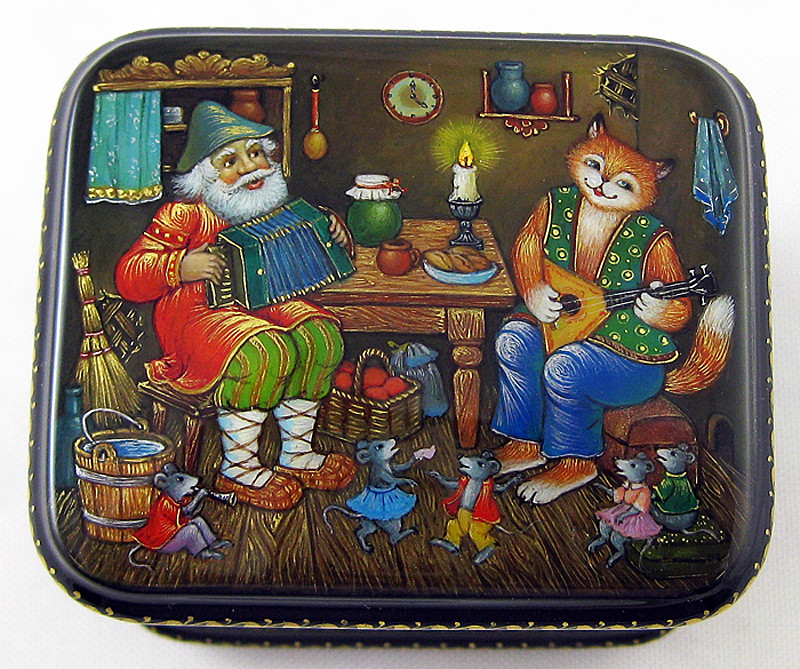Palekh village is located a few hundred kilometers Northeast of Moscow in the Vladimir-Suzdal region. The name of Palekh has nearly become synonymous with the art of Russian lacquer painting and lacquer boxes. The exquisite, highly detailed miniatures from Palekh have been called "small miracles" and are sought after by collectors throughout the world.
Palekh has a long artistic tradition and for centuries the village was a famed center of icon-painting. With the October Revolution of 1917 the icon painters of Palekh found themselves out of work. The new government closed down the churches and banned icon production.
In Palekh a group of artists joined together to find an alternative to icon painting. They saw the success of lacquer miniature painting in the village of Fedoskino, and decided to pursue a similar enterprise. They borrowed the methods of papier maché production and lacquering from Fedoskino, but used their traditional icon painting techniques in the production of their lacquer miniatures, including the use of egg tempera pigments. Thus, in 1924 the Old Painting Artel was formed in Palekh.
Through the difficult years of World War II and the decades of Communist rule, Palekh lacquer miniature painting survived and established itself as a unique Russian art form.
Palekh has a population of just 2,000, yet nearly 200 men and women are actively pursuing careers as lacquer miniature artists. To become a qualified Palekh lacquer box artist requires acceptance to the Palekh School of Lacquer Miniature Art and rigorous study for 4 to 5 years. In the beginning would be Palekh miniaturists study the basics of form, color, and composition. Early technical training is done by copying the works of previous artists. Later the student will attempt to create new, unique compositions. Applications to the school arrive from all over Russia, however, only about five graduates are produced each year.
Favored themes for lacquer boxes and miniatures from Palekh are the Russian fairy tales. Especially popular is the image of Ivan attempting to capture the mythical Firebird. Also popular are scenes of the famous Russian troika (three horse sleigh), and scenes of traditional peasant life in the countryside.
Some distinguishing characteristics of Palekh art include: elongated, graceful figures; pure, vibrant colors applied in layers; elaborate gold and/or silver ornamentation applied in fine lines throughout the painting; intricate decorative borders; and a black background known as plein aire which provides contrast to the pure colors. Palekh lacquer boxes are usually signed with gold in the margin between painting and border. The artist's name, village name, and year of production are standard marks on the box.

